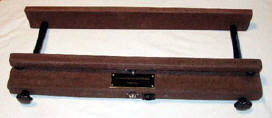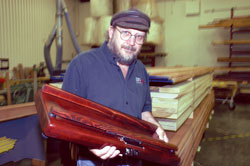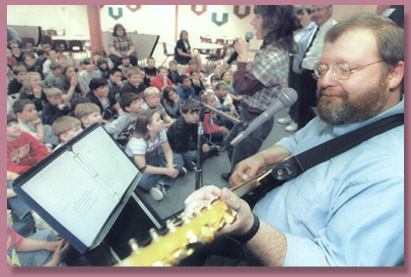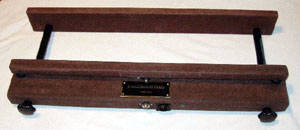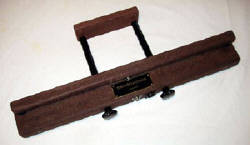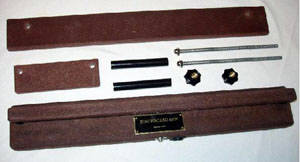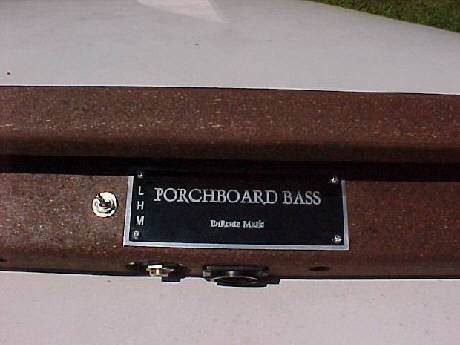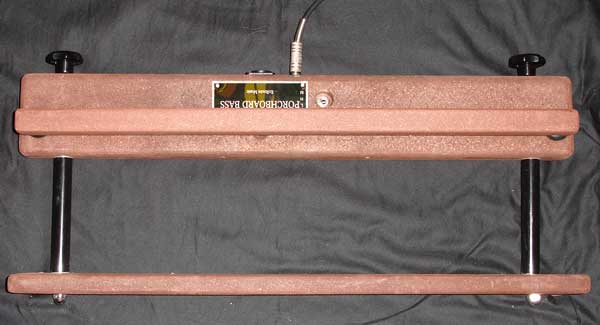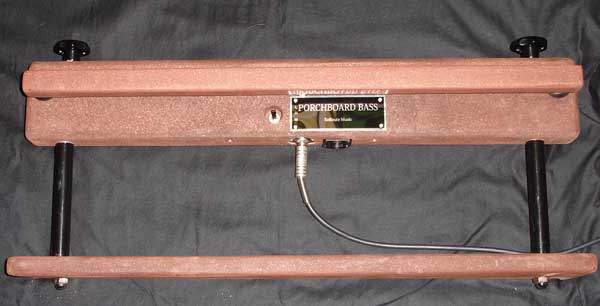Difference between revisions of "PorchBoard Floor Bass"
m (→Reversed) |
m (→Alternate Assembly) |
||
| Line 159: | Line 159: | ||
=== Alternate Assembly === | === Alternate Assembly === | ||
| + | The following pictures are viewed from the player's perspective. | ||
==== Normal ==== | ==== Normal ==== | ||
This is the way you usually assemble a PorchBoard. | This is the way you usually assemble a PorchBoard. | ||
Revision as of 16:14, 21 October 2008
ContentsMusical Instrument (Percussion)The PorchBoard Floor Bass is a simple percussion instrument designed to be tapped by a foot to provide a "kick drum"-like sound. It could be classed as an instrument of indefinite pitch containing complex frequencies through which no discernible pitch can be heard.[1] With very little audible sound by itself, the internal pickup provides both 1/4" and XLR output connections that may be used simultaneously. See the PorchBoard website for more information about the available models.
Settings on the L1® for the PorchBoardT1 ToneMatch® Audio EngineYou can run the PorchBoard into T1® Channel 4 or 5, completely flat, no effects. While you could use T1® Channels 1, 2, or 3, there is no need to do that, so you can leave 1, 2, and 3 available for other inputs that require more gain. The ToneMatch® settings are
L1 Classic or L1 Model IOn a L1 Classic or L1 Model I, you may use Power Stand Channel 3 or 4. L1 Model IIYou can also run the PorchBoard directly to a L1 Model II Power Stand Analog input. You would use the Analog trim to control the volume. If you don't mind doing that, this leaves another input on the T1 ToneMatch Audio Engine available. Playing the PorchBoard through the L1®Like any instrument, when you spend some time with it you can get different effects and be more expressive with it as you learn it's capabilities & limitations (and yours!).
|
See / Hear it
Where it came from and how it works. Discussions about the PorchBoard
Enroute Music
TechnologyProximity SensorFrom the PorchBoard website:
Added notes from Bill
BackgroundNotes from Nadene Isackson
|
The Instrument
General Description
- constructed using durable composites
- features XLR and 1/4" outputs
- passive - no batteries or additional power sources are required.
- no noise, feedback or delay
- disassembles for compact travel (no tools required)
- includes two interchangeable heel rails to accommodate seated or standing musicians
- includes a handy carry bag
Assembled
Long Heel Rail - Seated
The PorchBoard using the Long Heel Rail for playing while seated.
Short Heel Rail - Standing
The Porchboard using the Short Heel Rail for playing while standing.
Disassembled
The PorchBoard ships with both Long and Short Heel Rails.
UCL-S
The UCL-S model is identical to the UCL (shown above) except that it has a 3-way frequency response switch for increased amplification capabilities
Instructions
This is included here because it gives insight into the different models. From the PorchBoard site
The PorchBoard Bass plugs directly into an amplification system (set up much like a bass guitar would be.)using a quarter-quarter guitar cord or an XLR cord (or both simultaneously). No additional power sources or batteries are required.
Beginning tapping (heel on heel rail and toe on suspended toe rail) with a very simple beat, tapping once or twice each measure. With a little practice you will develop your own style and rhythm and your PorchBoard playing will become automatic.
Adjust the amplifier controls for tone and adequate volume. We suggest using a maximum setting on the low end (bass) control and then adjust the volume control so that a good sound is achieved with minimum tapping effort. Extreme tapping efforts are not necessary.
The UCL PorchBoard is designed to produce a tone in the 33-100 HZ range (very low). The 33 HZ (with a strong 99 HZ harmonic) was selected because it offers a strong supportive bass "thump" in any key- similar to a large marching band bass drum. Often the nature of the sound tends to resemble a note when another instrument (such as a guitar) suggests a note.
Excellent results can be obtained by using a quality bass amp, keyboard amp, capable PA system, powered subwoofer (the PorchBoard has adequate output to drive most powered subwoofers without the use of a pre-amp or any amplification system) that can reproduce these low frequencies at adequate levels.
The UCL-S PorchBoard has all the low-end benefits of the UCL model plus features a three way frequency response switch designed to match the frequency range of an increased number of amplifiers with higher frequency sound capability. The L (low) setting allows the very low bass, perfect for subwoofer or quality bass amp usage. The M (mix) setting filters a mix of low and high frequencies, and the H (high) setting provides for high end, stompbox slap.
Alternate Assembly
The following pictures are viewed from the player's perspective.
Normal
This is the way you usually assemble a PorchBoard.
Reversed
Try assembling your PorchBoard like this and the connectors will be protected. This takes a little less floor space. Just disassemble the PorchBoard, rotate the large section 180° and reassemble. The distance between the heel rail and the sensor rail is about 3/4" longer when you do this.
